- Home
- Richard Dawkins
An Appetite for Wonder Page 17
An Appetite for Wonder Read online
Page 17
Another elaboration of the model, which I published as the ‘Attention Threshold Model’,49 was an attempt to probe more deeply the ‘penny tossing’ of the original Drive Threshold Model: the indiscriminate choice of target when more than one threshold is exceeded. Briefly, I suggested that chicks attend to one dimension at a time – colour, shape, size, texture etc. – and in a definite order. Each of these attention systems has its own version of the Drive Threshold Model. The chick attends to the first dimension – say, colour. If the colour system’s drive/threshold delivers a definite choice, the chick goes for the preferred colour, say Blue. But if the colour system’s verdict is a ‘penny toss’ the chick switches its attention to something else, say shape, and ignores colour. From the colour system’s point of view, choosing by shape is equivalent to choosing at random. But of course it is not random from the shape system’s point of view. This trickle-down process continues through all the attention systems. If all else fails, the equivalent of a ‘penny toss’ is something like ‘choose the nearest one’. The Attention Threshold Model yielded a series of further predictions (making nine predictions in all), which I tested with success.
Again, as with the solid shading experiments: is it possible that a version of the Drive Threshold Model might apply to humans? I searched the scientific literature and found that several psychologists had done pairwise preference tests on humans. Their motivation was different from mine, but I could use their published results. There are various reasons why a psychologist might present a range of choices in all possible pair combinations: to test an idea in Voting Theory, for instance. Instead of offering a three-way choice between Conservative, Liberal and Socialist, with either winner-take-all or rank-order voting, a pollster might investigate the benefits of pairwise testing: ‘How would you vote between Conservative versus Liberal (if there were no other choice), between Liberal versus Socialist (given no other choice), and finally between Conservative versus Socialist?’ Anyway, for whatever reason, psychologists have presented humans with choices in all possible pairwise combinations. I was therefore able to feed their measurements of Best versus Medium, and Medium versus Worst, into my formula, and test my model’s prediction of Best versus Worst. The data came from a diverse set of studies: American students choosing handwriting samples, American students choosing vegetables, American students choosing bitter/sweet tastes, and Chinese students choosing colours. In addition, I was especially delighted to be able to use a big study of preferences for composers shown by the members of the Boston Symphony Orchestra, the Philadelphia Orchestra, the Minneapolis Symphony Orchestra and the New York Philharmonic. Following is a graph pooling all the results from humans. Once again, if the Drive Threshold Model’s predictions were perfect, the points would fall along the diagonal line. I must say I was pretty excited when I saw how closely the prediction was fulfilled. Predictions in behavioural biology just aren’t usually fulfilled that precisely!
The orchestra study was large, and processing the data laborious. I discussed the problem with my Uncle Colyear, who was by then in the Oxford Forestry Department, lecturing and advising on statistical methods. He suggested that I should learn to program the university computer. He and his wife Barbara got me started and helped me to write a program for the composer preferences. And so began my forty-year time-wasting and soul-consuming love affair with computer programming, a love affair that is now happily over: I am still an intensive computer user, but I now leave the programming to professionals.
Back then in the mid-1960s there was only one computer in Oxford University: a brand new English Electric KDF9, less powerful than an iPad today, but state-of-the-art in its time and filling a large room. The programming language favoured by my uncle and aunt was K-Autocode, a British alternative to Fortran with a similar structure and grammar, and a similar tendency to foster bad programming practice (absolute jumps, for instance). At that time American computers used great stacks of punched cards (vulnerable to being dropped and irretrievably shuffled) and British ones used punched paper tape (spewed out into great spaghetti mounds on the floor, which then had to be rolled up and were vulnerable to tearing). Thank goodness those days are over. Thank goodness, too, that computers now communicate with us via a screen or loudspeaker, not on reams and reams of paper – and immediately, instead of after a 24-hour delay.
But in those days we knew no better, and I was captivated. I was entranced by the idea of pre programming a sequence of operations and chugging through them step by step with a pencil to check them, then unleashing them in the computer to be rerun at very high speed and thousands upon thousands of times. I had a terrible night when I dreamed that I was a computer running my program and I spent – as it seemed – the whole night going through repeat loop after repeat loop in my fevered brain. To be fair, conditions that night were not ideal for sleeping anyway. Along with several of the Bevington Road crew, I had been persuaded by my friend Robert Mash to spend the weekend hunting the Surrey Puma.
Ever since 1959, sightings of a mysterious large carnivore had been reported in the woods of Surrey in southern England. Dubbed the Surrey Puma, it had achieved the status of a minor Yeti-style myth, and a group of us joined together to spend a weekend in May 1966 trying to find it. The newspapers heard about the scheme and, with news material getting thinner as the summer Silly Season approached, the Observer printed a photograph of me in a British Empire pith helmet (solar topee) of the kind that I had worn as a child. I have forgotten where my companions pitched their tents, but my assigned role was to spend the night in a sleeping bag, out in the open under the stars, surrounded by great haunches of raw meat. I was allocated a camera with a flash, and my marching orders were to photograph the puma if it should come to take the meat – or me, I suppose. I didn’t sleep peacefully, to say the least, so perhaps it was not surprising that my computer nightmare should have come on that particular night. Dawn came as a great relief to me and my companions, and a dreamily misty dawn it was (as you can see from the photograph reproduced in the picture section). We never did find the Surrey Puma, and it may be significant that sightings went on being reported as late as 2005, which would seem to suggest that the Surrey Puma lived more than twice as long as the maximum recorded lifespan of its species, even in captivity.
My computer habit moved on from the KDF9 to a smaller but more accessible computer. Oxford Zoology had acquired a dynamic new professor (head of department in the Oxford-speak of the time) in succession to the genial and slightly batty-looking Sir Alister Hardy. The stiff new broom from Cambridge was ‘Laughing John’ Pringle (one of those ironic nicknames, like ‘Lofty’ for a very short man), and the department was thrown into a whirlwind of modernization. In one way after another, dear old Alister Hardy’s dear old department was ‘upgepringled’, no doubt for the better. Among the more exciting instances of upgepringleheit was the arrival from London of an equally dynamic group of X-ray crystallographers (think Watson/Crick, but with protein molecules instead of DNA). And, most exciting for me, they brought with them their own computer, which I was allowed, by its friendly custodian Dr Tony North, to use at night when it wasn’t needed for number-crunching the patterns of X-ray scattering by crystals. An Elliott 803, it was even more primitive by modern standards than the KDF9, but it had the enormous advantage that I was allowed to get my hands on it.
This was the time when I became fully aware of the addictive lure of computers. I really did literally – and frequently – spend all night in the warm, glowing computer room, entangled in a spaghetti of punched paper tape, which must have resembled my insomnia-tousled hair. The Elliott had the charming habit of beeping an acoustic rendering of its inner processing. You could listen to the progress of your computation through a small loudspeaker which hummed and hooted a rhythmic serenade, doubtless meaningful to Dr North’s expert ear but merely companionable to my nocturnal solitude. Nocturnal dalliance with computers in youth is characteristic of those – now called geeks – whose love
affair with computers lasted longer (and more profitably) than mine: Bill Gates, to name one. With hindsight I cannot say that my affair with the Elliott was productive. No doubt I obtained some valuable practice in the art of programming. But Elliott Autocode was not a language that could be used on any other computers, and my nocturnal geekery, though diligent and very hard work, bore the same relation to serious programming as my tootling in the Oundle music school bore to real music.
I gave a talk on my Drive Threshold Model at the 1965 International Ethological Conference in Zurich. For the talk, I built a physical model of my theory, incorporating a rubber tube filled with mercury which I jiggled up and down to represent fluctuating ‘drive’. The rubber tube was attached to the bottom of a vertical glass tube, into which were let three electrical contacts at different depths, representing ‘thresholds’. Mercury is an electrical conductor, so when the jiggling column hit any of these contacts (the ‘drive’ exceeded the ‘threshold’) a circuit was completed. Obviously, if mercury was in contact with any electrode, it was automatically in contact with all lower electrodes too, which captured the major assumption of the model. I implemented the rules of the model by means of a noisy system of clattering electromechanical relays switching on coloured lights to represent pecks at different colours. The whole Heath Robinson50 affair was calculated to bring the house down, just as, at an earlier Ethological Conference in Oxford, a spoof hydraulic simulation devised by Desmond Morris, Aubrey Manning and friends reputedly had. How I managed to transport it from Oxford to Zurich evades my memory, and indeed my comprehension. There’s not a chance that today’s airport security would allow anything remotely like it through, bristling as it was with amateurishly soldered wires, relays, batteries and mercury.
Alas, just as I was about to go on the big stage for my first ever conference performance, something went wrong and my contraption wouldn’t work. In a sweat of panic and unable to think straight, I was kneeling on the floor outside the theatre, frantically tinkering, when I suddenly became aware of an amused Austrian accent barking out peremptory orders at great speed behind me. The rapid-fire, stuttering voice told me exactly what to do. As in a dream I obeyed – and it worked. I turned to look at my saviour, and beheld Wolfgang Schleidt, whom I hadn’t previously met although I knew who he was. Without any prior knowledge of what my infernal machine was supposed to do, this rising star of continental ethology had come upon my panic, instantly sized up the problem and dictated the solution to me. I have been grateful ever since to Dr Schleidt, who had, as I later learned without surprise, a reputation for technical ingenuity. I bore my strange device up into the theatre and at the end of my talk its spluttering coloured lights and air of Heath Robinson amateurishness received a reception little short of an ovation. Thank you, Wolfgang Schleidt: and for more than saving my blushes. For in the audience that day was the handsome figure of George Barlow, rising star of American ethology, and he was sufficiently impressed by my talk to get me invited to become an assistant professor at the University of California at Berkeley, without an interview or submission of a curriculum vitae: my first proper job.
But that was to come later. Meanwhile, back in Oxford, Niko Tinbergen had a sabbatical leave in 1966 and he invited me to take over the undergraduate lectures on animal behaviour for that year. He offered me his lecture notes, but I decided instead to develop my own lectures from scratch. Because this was the first course of lectures I ever gave, I wrote them out pretty fully. I thought I had lost them long ago but, to my surprise, they turned up in a cardboard box in the basement of my house while I was writing this memoir, and it was quite interesting for me to read them forty-six years on – especially the lecture on social behaviour, because it so clearly demonstrates both the central message and the style of The Selfish Gene, despite having been written a full ten years before that book.
In 1964, the Journal of Theoretical Biology had published two long and rather difficult mathematical papers by W. D. Hamilton, a young graduate student at the University of London whom none of us knew at the time, although he was later to become a close colleague. Mike Cullen characteristically recognized the importance of Hamilton’s papers before almost anyone else in the world except John Maynard Smith, and he expounded them one evening to the Bevington Road group. Mike’s enthusiasm was infectious, and I was immediately fired up, to the extent that I wanted to explain Hamilton’s ideas to the undergraduates in my stand-in lectures on animal behaviour.
Hamilton’s theory, now often labelled ‘kin selection’ (Maynard Smith’s name, not Hamilton’s own), follows directly from the neo-Darwinian ‘Modern Synthesis’ – directly, in the sense that kin selection is not an extra, not an addition bolted on to the neo-Darwinian synthesis: it is a necessary part of the synthesis. You cannot divorce kin selection from neo-Darwinism, any more than you can divorce the Pythagorean theorem from Euclidean geometry. A field biologist attempting to ‘test’ kin selection is in the same position as Pythagoras setting forth with a ruler seeking triangles to measure.
The neo-Darwinian synthesis, as opposed to Darwin’s own version of his theory, is centred on the gene as the unit of natural selection. Genes are discrete entities that can be counted in a population, more or less ignoring the fact that they are in fact sitting in the cells of organisms. Each gene has a frequency in the ‘gene pool’, which is approximated by the number of reproductive individuals possessing it. Successful genes are those whose frequency increases at the expense of unsuccessful alternatives, which decrease in frequency. Genes that cause an animal to be good at caring for its offspring tend to increase because they are carried in the bodies of the offspring cared for. Hamilton realized (as Fisher and Haldane had too, sort of, but they didn’t make much of it) that offspring are not the only category of relatives who share genes, and who therefore might be beneficiaries of evolved caring.
Hamilton derived a simple rule (now called Hamilton’s Rule): any gene ‘for’ altruism towards kin will tend to spread through the population, if the cost to the altruist C is less than the benefit B to the recipient devalued by the degree of relatedness r between the two. The degree of relatedness r is a proportion (i.e. a number between 0 and 1) which Hamilton showed how to calculate (its exact meaning is hard, though not impossible, to explain intuitively).51 Between full siblings, r is 0.5. Between uncles and nephews it is 0.25, between first cousins 0.125. Hamilton had a special interest in the social insects, and he made brilliant use of his theory of kin selection in explaining how ants, bees, wasps and (in a rather different way) termites evolved their remarkable habits of social altruism.
A typical underground nest of ants is a factory for propagating genes and spreading them around the countryside. The genes are churned out from the factory packaged up inside the winged bodies of young queens and males. These flying ants (which you might not realize are ants because of their unfamiliar wings) erupt from holes in the ground and fly up to mate on the wing. During her mating flight, each female (young queen) collects a lifetime’s supply of sperm, which she will store inside her body and eke out over the course of a long life. Laden with sperm, the mated female flies off and settles down to dig a hole and found a new nest. In some species, she bites or breaks off her wings, as she will need them no more in her role as subterranean queen.
Most of her offspring will be sterile workers, but the important children from the point of view of gene propagation are the young (winged) queens and males. Workers (all female in the case of ants, bees and wasps; male and female in the case of termites) normally have no prospect of passing on their genes through offspring, and devote their efforts to feeding and caring for their fertile collateral relatives, young queens and males, their siblings or nieces, for instance. A gene that makes a sterile worker care for a sister who is destined to become a queen can pass into future gene pools, carried there in the body of the young queen. The caring behaviour may never be expressed by the young queen herself, but the gene for that behaviour will be passed
on to her worker daughters, who will consequently care for young queens and males who can pass it on.
The social insects are just a special case. Hamilton’s Rule applies to all animals and plants, whether or not they in practice care for relatives. If they don’t care for relatives, the reason will be that the economic costs and benefits in Hamilton’s Rule (the Bs and Cs) don’t pan out in such a way as to favour it, in spite of the fact that the coefficient of relatedness r may be high. And – a point that is often misunderstood, even by professional biologists – individuals care for their offspring for the same reason that elder siblings care for younger siblings (when they do): in both cases they share the genes for caring.
As I said, I was fired with enthusiasm when Mike Cullen introduced us to Hamilton’s brilliant ideas, and I very much wanted to try my hand at explaining them in my own way, in the lectures that I was to give as understudy for Niko Tinbergen. I was diffident about departing so far from Niko’s message and substituting my own rhetoric – about ‘selfish genes’ inhabiting a succession of mortal bodies, to be thrown away in the genes’ relentless march into the future. Seeking reassurance, I showed my typed-out lecture to Mike Cullen, and seeing again his handwritten marginalis today reminds me that I was hugely encouraged by it at the time (see the facsimile). It was Mike’s ‘lovely stuff’ that emboldened me to persist with my plan to lecture on this topic and in this style. And I suppose this could be said to be the moment of conception of The Selfish Gene, born ten years later. My lecture notes even contained the phrase ‘genes will be selfish’. I’ll return to this later when I come to the book itself.

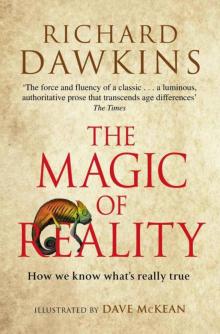 The Magic of Reality
The Magic of Reality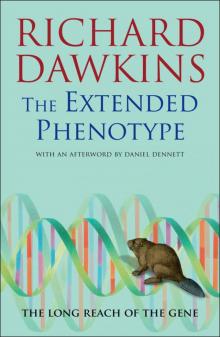 The Extended Phenotype
The Extended Phenotype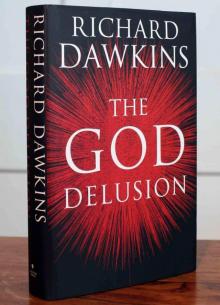 The God Delusion
The God Delusion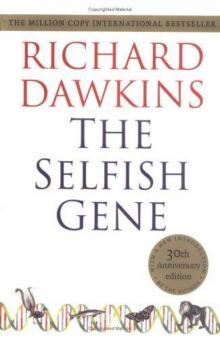 The Selfish Gene
The Selfish Gene The Blind Watchmaker
The Blind Watchmaker The Greatest Show on Earth
The Greatest Show on Earth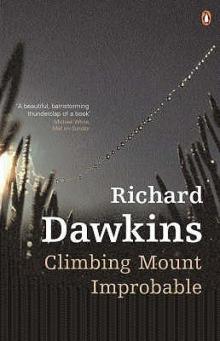 Climbing Mount Improbable
Climbing Mount Improbable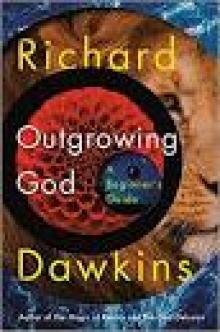 Outgrowing God
Outgrowing God Brief Candle in the Dark
Brief Candle in the Dark The Greatest Show on Earth: The Evidence for Evolution
The Greatest Show on Earth: The Evidence for Evolution Science in the Soul
Science in the Soul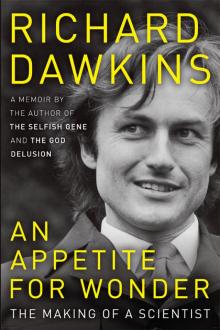 An Appetite for Wonder
An Appetite for Wonder